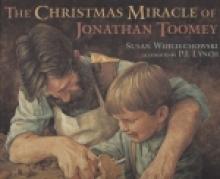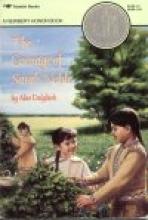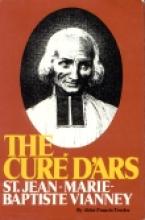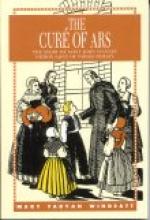No name
The Christmas Miracle of Jonathan Toomey
Newer editions have a different cover, but interior artwork and content appear to be unchanged.
The Chronicle of Pilgrimage to the Holy Land
Available here: http://www.kindle-business.com/footsteps.html
They are now offering the following discount (with the applicable discount code in bold):
1) Book (DEAL1000): $47.90, plus $2 shipping and handling, for a grand total of $49.90
2) DVD (DEAL1010): $11.99, plus $2 for shipping and handling, for a grand total of $13.99
The Church's Most Powerful Novenas
The City of the Golden House
The Core
Though critical thinking skills and experiential learning are very valuable, the education associations forgot two things: first, that students needed to memorize information so they would have something in their brain to critically think about or to compare to their experiences, and second, that the brain needs to be intentionally trained in order to think well. We readily accept the idea that to learn to play an instrument or to do a sport, students must first memorize certain fundamentals. Yet in many, if not most, schools today children are expected to analyze a book or write their own story without first being made to memorize, or even copy, good examples of prose or poetry.Bortins did her undergraduate studies in aerospace engineering and her love of math comes through especially well in her chapter on teaching the grammar of math. Most educators would probably agree that a child must first acquire the basic math facts—addition, subtraction, multiplication and division—before moving on to more complex mathematical equations. Bortins not only advises all students memorize the multiplication tables through 20 x 20, but she also advocates students learn to quickly multiply and divide double digit numbers in their heads, and memorize the common squares and cubes, among other things. These fundamentals, she says, are the grammar of mathematics. Some authors point out the growing illiteracy of the American public, and Bortins speaks of the massive innumeracy of our culture that depends upon calculators, cash registers and computers to do all of our basic computations for us. A person learning a foreign language must wrestle with the grammatical rules of that new language, and so must students of mathematics learn the rules and grammar of math in order to become fluent in the language of math. The other subject areas get similar treatment, and Bortins offers practical advice for parents and teachers, with lists of things to have students memorize in order to become competent learners. For example, in the chapter on science, Bortins admits it would be an impossible task to memorize all the science facts, but she offers an impressive list to get us started. When she was devising the lists for science for her own students, she arranged them as a series of questions, similar to the “ancient catechisms used in the schools in Alexandria during the first three centuries A.D.” (If you’re like me, you’re thinking, Baltimore Catechism!) Bortins tells us, “The term ‘catechism,’ [although] usually associated with religious instruction…is actually a classical method of memorization for any subject, in which a preconstructed set of questions and answers are used to teach precision in responses.” The emphasis in all subjects should be on understanding the fundamentals of the subject, through memorization, prior to moving on to the higher levels of learning in the logic and rhetoric stages. Bortins gives us a general, yet very practical, outline of lists of things to have our students memorize. However, she has not given us all the particulars of those lists. Instead she gives us topics and tips to get us started either making our own lists, or seeking out lists from other sources. She gives some suggestions for further reading and sources in the back of the book.
Reviewed by Debbie Nowak
The Core Knowledge Series
Titles in this series include What Your Kindergartner Should Know, What Your First Grader Should Know, etc. The series is written for parents of children in traditional schools to get an idea of how the schools are doing and to assist the parents in supplementing their child's education at home. The series amounts to an extensive "Scope and Sequence" which outlines the fundamental skills and concepts which should be understood in each grade and includes supplementary exercises, poems, stories and recommended resources to assist in fulfilling the stated goals. I know quite a few Catholic homeschoolers (particularly those who are "putting together their own program") who have found this series very helpful. It can also be a good choice for those who are temporarily homeschooling under circumstances that don't allow for a large quantity of books (such as those homeschooling away from home for various reasons). For others, it might be "one more thing" to make their lives more complicated. Please keep in mind that, although the perspective is in many ways positive (especially in comparison to the public school system) the series is still secular and contains some material which should be taken with a grain of salt.
The Courage of Sarah Noble
Because the book focuses so much on her courage, this book could be used as a springboard for discussing the role of Guardian Angels in our lives. Of course, it should be mentioned to the child reading the story that Sarah was not Catholic and would not know that she could pray to her Guardian Angel whenever she was frightened. In the same light, it would also have been nice if Sarah would have placed more faith in God and said a prayer every time she was frightened instead of clutching her cloak or repeating the words "'keep up your courage.'" Sarah does, however, say her night prayers when she stays with an Indian family while her father returns home to bring the rest of the family to the cabin and she does read her Bible( Both incidents are naturally interwoven in the story).
In particular, I really liked the way Dalgliesh develops Sarah's relationship with her father. It is very heart warming to see this kind of relationship presented in literature. Not only is he a good role model as a father, but, as a character, he speaks with wisdom. He is very gentle, patient, and loving with her. One statement that he makes that is very heartening to hear is when he says, "'It was a blessing the Lord gave me daughters, as well as sons.'" How many daughters in real life yearn to hear their fathers say this? He also comments, when he is referring to the Indians, "'In our home all will be treated with kindness always Sarah.'" This is a nice counterpoint to the fear she had of the Indians as ruthless savages. The story also realistically makes clear that although some Indians are peaceful, some are to be feared.
My only concern with the story would be that I would be hesitant to read this story aloud with younger children (4 year olds) in the room who are already fearful by nature, because of the constant emphasis of her fear. For the age that it is intended, it should not be a problem.
Overall, this is an easy to read short chapter book for the 3rd-6th grade reader. It is a very realistic portrayal of life in the wilderness as a little girl struggles to overcome her fears, at the same time trying to do the right thing. Because of the way each chapter is presented, this book would be ideal for discussing each chapter's theme between the parent and child. I would recommend this book along with discussion. For example, "Do you think it was kind for the children to tease Sarah?" What could they have said instead.
The Cure D'Ars
This book also bears a special recommendation from Pope John Paul II and had a substantial influence on his life. He had this to say about St. John Vianney and this particular book in his own book Gift and Mystery: On the Fiftieth Anniversary of My Priestly Ordination...
"With great emotion I visited the little old church where Saint John Vianney heard confessions, taught catechism, and gave his homilies. It was an unforgettable experience for me. From my seminary years I had been impressed by the figure of the Cure d'Ars, especially after reading his biography by Monsignor Trochu. Saint John Marie Vianney astonishes us because in him we can see the power of grace working through human limitations. It was his heroic service in the confessional which particularly struck me. That humble priest, who would hear confessions more than ten hours a day, eating little and sleeping only a few hours, was able, at a difficult moment in history, to inspire a kind of spiritual revolution in France..." (pp. 57, Gift and Mystery by Pope John Paul II)










